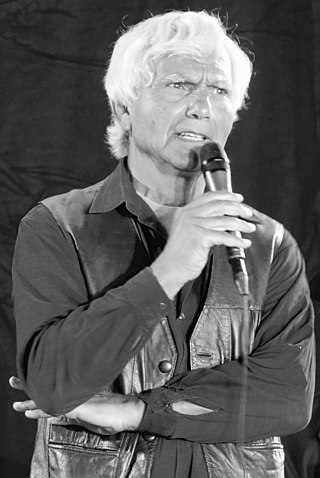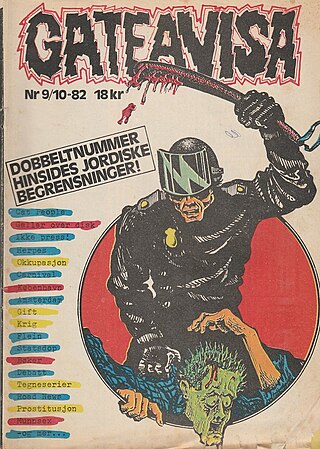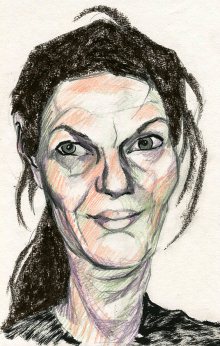
Oslo is the capital and most populous city of Norway. It constitutes both a county and a municipality. The municipality of Oslo had a population of 709,037 in 2022, while the city's greater urban area had a population of 1,064,235 in 2022, and the metropolitan area had an estimated population of 1,546,706 in 2021.

Sandnes is a city and municipality in Rogaland, Norway. It lies immediately south of Stavanger, the 4th largest city in Norway, and together the Stavanger/Sandnes area is the third-largest urban area in Norway. The urban city of Sandnes lies in the extreme western part of the vast municipality and it makes up about 5% of the total land area of the municipality.

Jens Ingvald Bjørneboe was a Norwegian writer whose work spanned a number of literary formats. He was also a painter and a Waldorf school teacher. Bjørneboe was a harsh and eloquent critic of Norwegian society and Western civilization as a whole. He led a turbulent life and his uncompromising opinions cost him both an obscenity conviction as well as long periods of heavy drinking and bouts of depression, which in the end led to his suicide.

Hausmania is a self-managed social centre and cultural house in Oslo, Norway. It was squatted in 1999 by a group of artists and run based on collectivist ideology. It is located alongside other squats at Hausmannsgate 34, in a zone designated as a cultural quarter. Hausmannsgate 42 was evicted in 2016. The centre hosts artist ateliers, a theatre, galleries, an internet space, a vegan café and a legal graffiti wall. Nearby are Kafe Hærverk and Vega Scene.

Eugenio Barba is an Italian author and theatre director based in Denmark. He is the founder of the Odin Theatre and the International School of Theatre Anthropology, both located in Holstebro, Denmark.

GeirThomas Hylland Eriksen is a Norwegian anthropologist known for his scholarly and popular writing on globalization, identity, ethnicity, and nationalism. He is currently Professor of Social Anthropology in the Department of Social Anthropology at the University of Oslo. He has previously served as the President of the European Association of Social Anthropologists (2015-2016), as well as the Editor of Samtiden (1993-2001), Norsk antropologisk tidsskrift (1993-1997), the Journal of Peace Research, and Ethnos.

UFFA is an anarchist youth house in Trondheim, Norway. The self-managed social centre provides a location for concerts and self-organised activities such as an infoshop at the Ivar Matlaus Bokkafé, a hacklab and an anarchist newspaper. Squatted in 1981, it moved to its present location the following year. The centre was burnt down in 2010 and then rebuilt.

Self-managed social centres in the United Kingdom can be found in squatted, rented, mortgaged and fully owned buildings. These self-managed social centres differ from community centres in that they are self-organised under anti-authoritarian principles and volunteer-run, without any assistance from the state. The largest number have occurred in London from the 1980s onwards, although projects exist in most cities across the UK, linked in a network. Squatted social centres tend to be quickly evicted and therefore some projects deliberately choose a short-term existence, such as A-Spire in Leeds or the Okasional Café in Manchester. Longer term social centres include the 1 in 12 Club in Bradford, the Cowley Club in Brighton and the Sumac Centre in Nottingham, which are co-operatively owned.

The Blitz House is a self-managed social centre hosting left-wing anarchists in Oslo, the capital city of Norway. Founded in 1982 as a squat, it is now legalized and based on Oslo's Pilestredet. It hosts activities such as political meetings, the feminist radio station radiOrakel, a vegan café, and musician practice rooms. The Blitz movement has been involved in a number of protests and riots, and has been attacked by right-wing extremists on numerous occasions.

Gateavisa is a countercultural magazine. It was first produced by an anarchist collective in 1970 at Hjelmsgate 3 in Oslo and focuses on anti-authoritarian topics. In it heyday in the early 1980s, an issue examining the stolen rubbish of two prime ministerial candidates sold over 20,000 copies. In 2020, a book celebrated 50 years of the magazine.
Events in the year 1920 in Norway.
Events in the year 1955 in Norway.
Events in the year 1960 in Norway.

Club 7 was a cultural club in Oslo, Norway, active from 1963 to 1985. It was regarded a centre for counterculture in Norway in the 1960s through the 1970s. There was a wide tolerance for alternative lifestyles, including homosexuality.
Sven Kærup Bjørneboe is a Norwegian essayist. He was born in Kristiansand, and is a nephew of writer Jens Bjørneboe.

Eva Therese Bjørneboe is a Norwegian theatre critic and editor. She writes for Aftenposten and is also editor of Norsk Shakespeare- og teatertidsskrift. She is a member of the jury of the International Ibsen Award.
Anarchism in Norway first emerged in the 1870s. Some of the first to call themselves anarchists in Norway were Arne Garborg and Ivar Mortensson-Egnund. They ran the radical target magazine Fedraheimen which came out 1877–91. Gradually the magazine became more and more anarchist-oriented, and towards the end of its life it had the subtitle Anarchist-Communist Body. The anarchist author Hans Jæger published the book "The Bible of Anarchy" in 1906, and in recent times Jens Bjørneboe has been a spokesman for anarchism – among other things in the book "Police and anarchy".

Squatting in Norway is taking possession of land or an empty house without the permission of the owner. The first public occupation was Hjelmsgate 3 in 1969 and self-managed social centres which were first squatted and then legalized include the Blitz House, Hausmania and UFFA. Brakkebygrenda was a land squat which has twice been evicted.
Base for Anarchy & Solidarity in Easton, commonly known as BASE, is an anarchist community co-operative and self-managed social centre in Easton, Bristol, England. Formerly known as Kebele, the building was squatted in 1995.

Squatting in Croatia has existed as a phenomenon since the decline of the Roman Empire. In the 1960s much private housing in major cities was illegally constructed or expanded and since the 1990s squatting is used as a tactic by feminists, punks and anarchists. Well-known self-managed social centres such as the cultural centre Karlo Rojc in Pula, Nigdjezemska in Zadar and (AKC) Medika in Zagreb.














